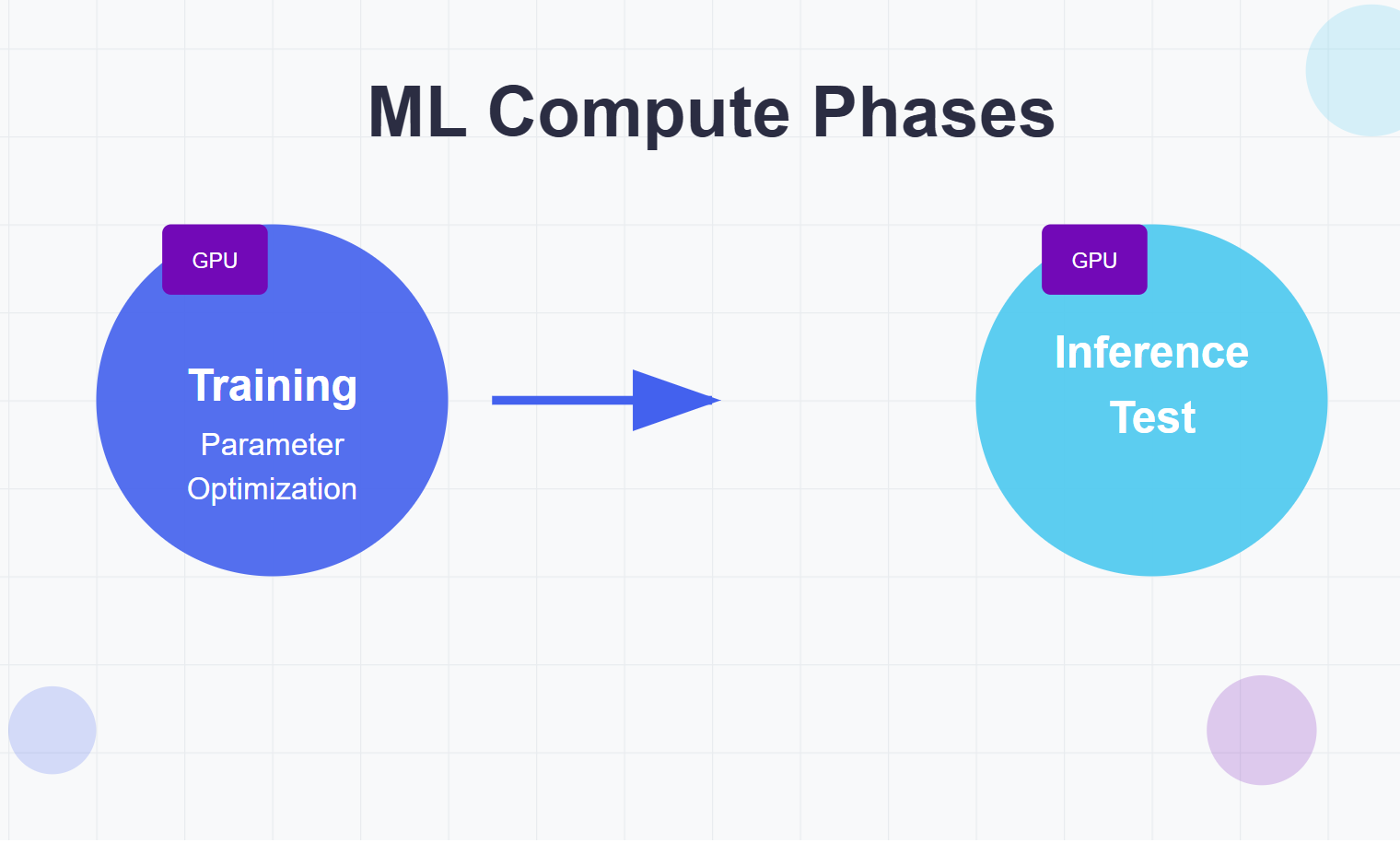What is Test Time Compute?

“More compute!” is a common refrain these days in discussions about enhanced LLM performance and capability. Just scan a few recent headlines to see the resources major companies are willing to pour into getting it. In a broad sense, this refers to more and better hardware used in model training. After training, though, inference time compute and test time compute come into play. Read on to demystify these concepts, clarify their differences and similarities, and understand how tools like PromptLayer can play a role in optimizing these stages.
Training vs. Inference (Test) Phase
Every ML model goes through distinct phases:
- Training time – when the model learns from data (adjusting its parameters). This phase is compute-intensive as it involves processing large datasets multiple times.
- Inference (or Test) time – when the trained model is applied to new data to generate predictions. This is the deployment or evaluation phase. Of course, offline evaluations of generative models such as LLMs are a bit more involved than just assessing their predictive capabilities, but that’s another discussion for another time.
The terms inference time and test time are often used interchangeably to refer to the post-training phase, but there is some nuance between the two. If you will humor my college football analogies, you can think of these loosely as game day (inference time) vs practice (test time) performance.
What is Inference Time Compute?
Inference time compute refers to the amount of computational power and time required for a trained model to make predictions on new data, such as end-user inputs. Think of it as game day performance. This is like if Coach Prime were to measure how long it takes Travis Hunter to react to an incoming pass, decide his path, and then make it to the end zone on game day after months of training.
Key impacts of inference time compute:
- User experience and model applicability. A model may achieve high accuracy, but if it takes too long to respond, it could be impractical for real-time use, especially when decisions need to be made in milliseconds.
- Scalability and cost. In production, models often serve thousands or millions of requests. The computational efficiency at inference time determines how much hardware is needed and the cost per query. Optimizing inference can lead to faster, more cost-effective systems.
- Power consumption and deployment feasibility, especially important for edge devices (like smartphones or IoT devices) where compute resources are limited.
What is Test Time Compute?
Test time compute generally means the computational effort expended when using or evaluating the model after training. Essentially, another way to describe inference-phase computation, but often in a more controlled environment. This is when Coach Prime is improving Travis Hunter’s performance in practice sessions and figuring out what to add to his training regimen–from new drills to weight training to nutrition–so that he does even better on game day.
Test time compute has gained particular traction in recent AI research, especially around large language models, to denote strategies that intentionally increase computation during inference to improve results. In other words, instead of just doing a single quick prediction, the model might do extra work to yield a better answer. In our football analogy, ideally, you don't want your wide receiver to take too much time to score since that leaves him vulnerable to the other team's defensive efforts, but even an extra couple of milliseconds spent looking for the best path to the end zone, and then doing what it takes to get there, can be worth it.
Key characteristics and uses of test time compute:
- Additional processing or heuristics applied during inference. This could be running the model multiple times, generating multiple candidate outputs and selecting the best one, or breaking a problem into sub-questions. All these require more compute than a straightforward single-pass inference.
- Scaled to improve model performance on difficult tasks. Recent advanced models like OpenAI’s o1 or o3, and Google’s Gemini, allow the model to "think longer" at test time – for instance, by iteratively refining an answer – which has led to significant performance gains on challenging benchmarks.
Inference and Test Time Compute in Reasoning Models
State-of-the-art reasoning models such as OpenAI's o-series with o1, o4, and o3, Gemini advanced with 1.5 Pro and 2.0, as well as DeepSeek r1 all aim to trade lower inference time compute for better, more robust answers. Rather than relying on a single forward pass and pattern recognition, these models take extra time and resources and use simulated "reasoning" through chain-of-thought to arrive at their answers. The difference extra compute can make is incredible. By allocating more compute at inference, sometimes even a smaller model can outperform a larger one by taking the time to refine its answer through multiple reasoning steps. The trade-off, of course, comes in latency and scaling considerations.
To that effect, some models like o3 mini allow the user to dial the inference effort up or down. o3-mini-high, for example, uses more (i.e. higher) reasoning than o3 mini. DeepSeek R1, meanwhile, uses a mixture-of-experts (MoE) architecture which lowers inference time while still delivering high-quality results. For an app where low-latency is paramount, a lower reasoning, lower inference time model is likely a better choice, especially as different models continue to shrink the gap between compute time and quality, robust results.
Prompt Engineering and Workflow Tools for Efficient Inference
Optimizing inference isn’t only about the model’s code or weights. Crafting effective prompts (aka prompt engineering) can reduce the need for brute-force compute at inference by guiding the model to the answer more directly.
Here’s how a tool like PromptLayer can be beneficial:
- Prompt versioning and experimentation: You can systematically try variations of a prompt to see which yields accurate results faster or with less tokens. By logging and comparing outcomes, in a sense, you effectively optimize the inference efficiency of the model.
- Workflow building with prompt chaining: If your application uses multi-step prompt workflows, PromptLayer’s visual workflow builder lets you design and monitor these chains. This is directly relevant to test-time compute – such multi-step processes are essentially leveraging more compute at inference time for better results.
- Monitoring and observability: PromptLayer provides observability into prompt usage, including latency tracking for each prompt. This is crucial because prompt length or complexity can affect LLM inference time. By monitoring latency per prompt, you can identify which prompts or parts of your workflow are slow and optimize them, keeping your application responsive.
Conclusion
Inference time compute and test time compute are two sides of the same coin – both concern the resources and strategies used when applying a machine learning model after it’s trained. Keeping inference efficient is vital for practical deployments, yet selectively increasing compute at test time (through clever algorithms or prompt strategies) can significantly boost results when needed.



